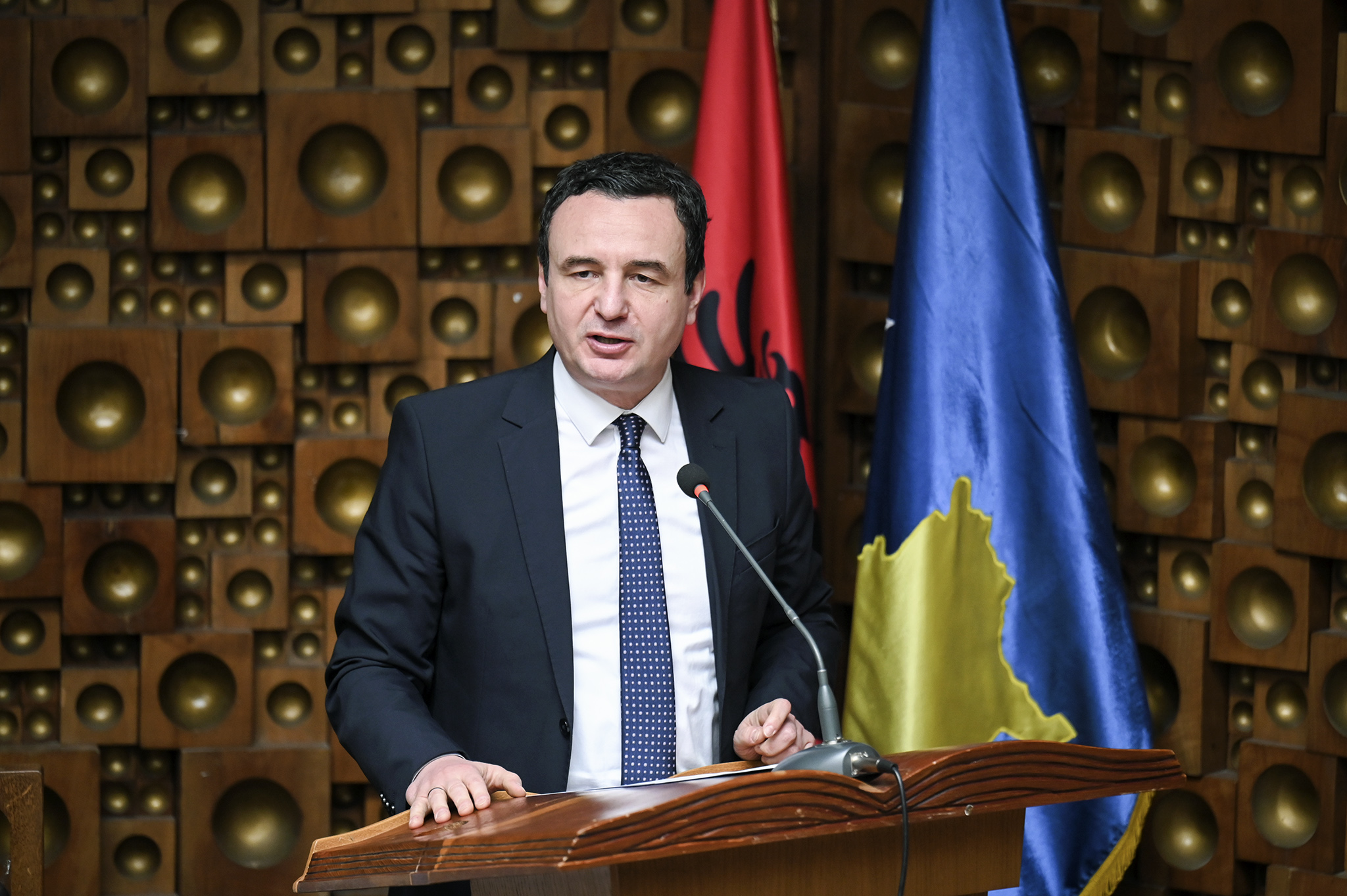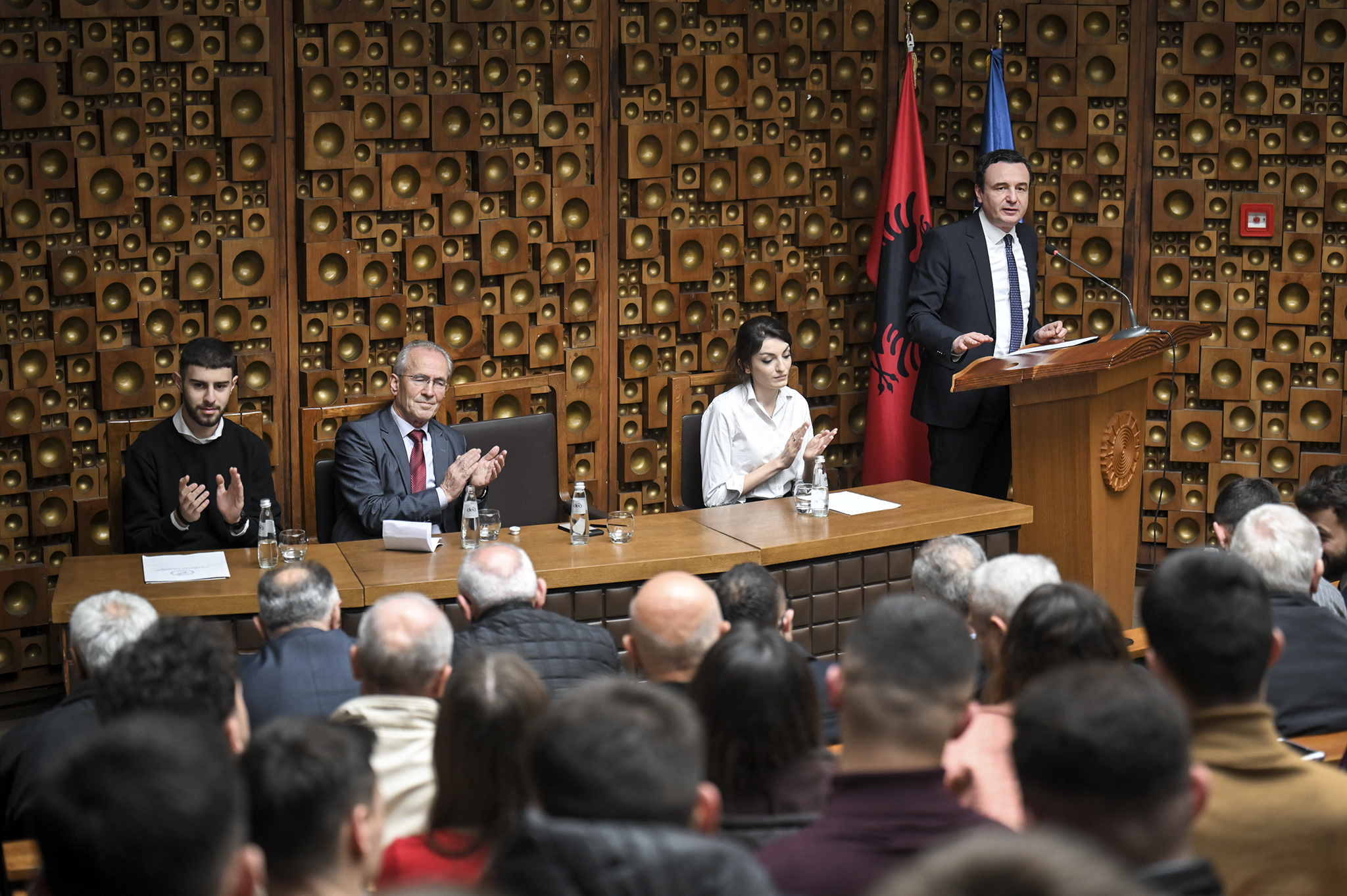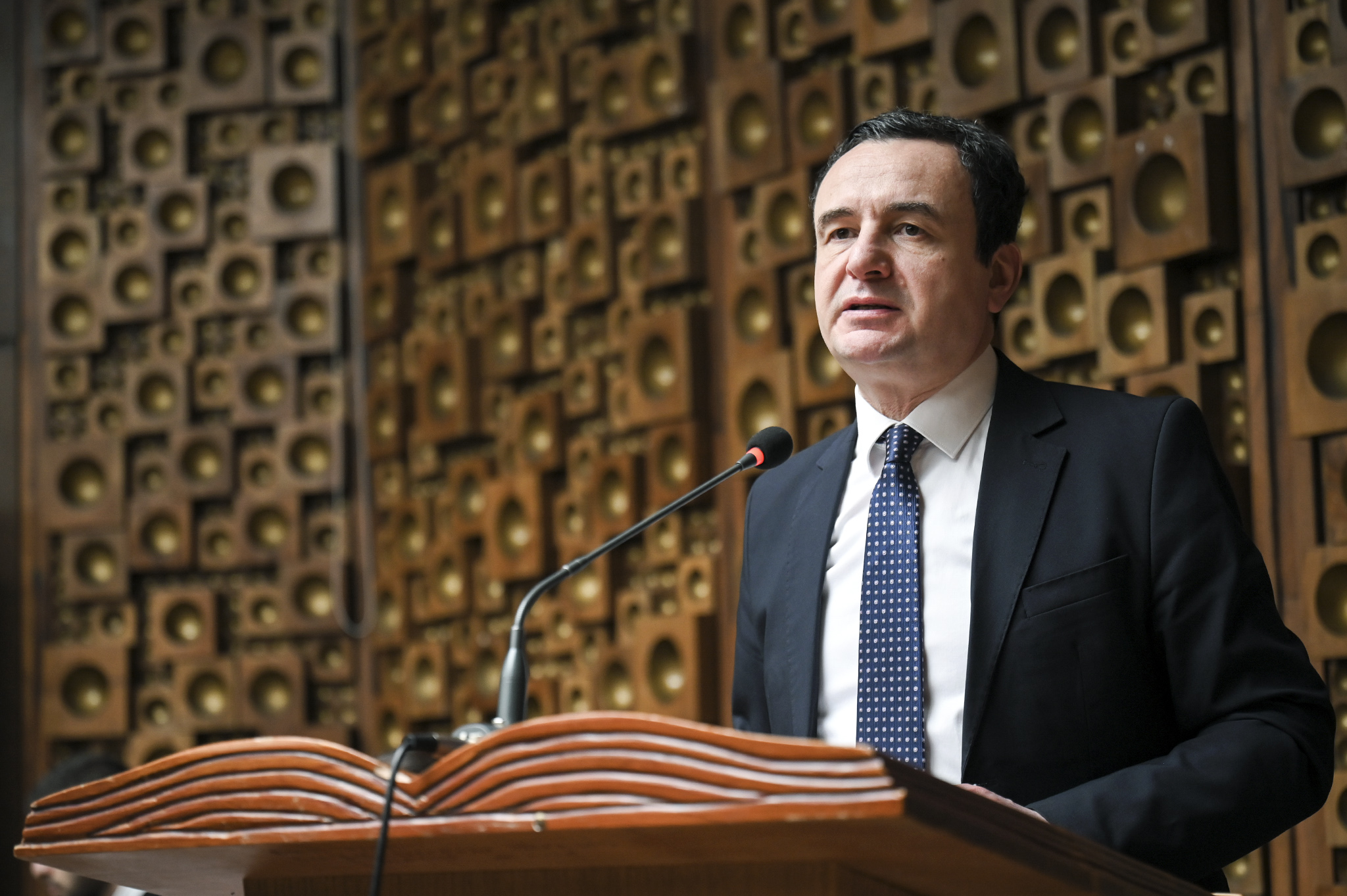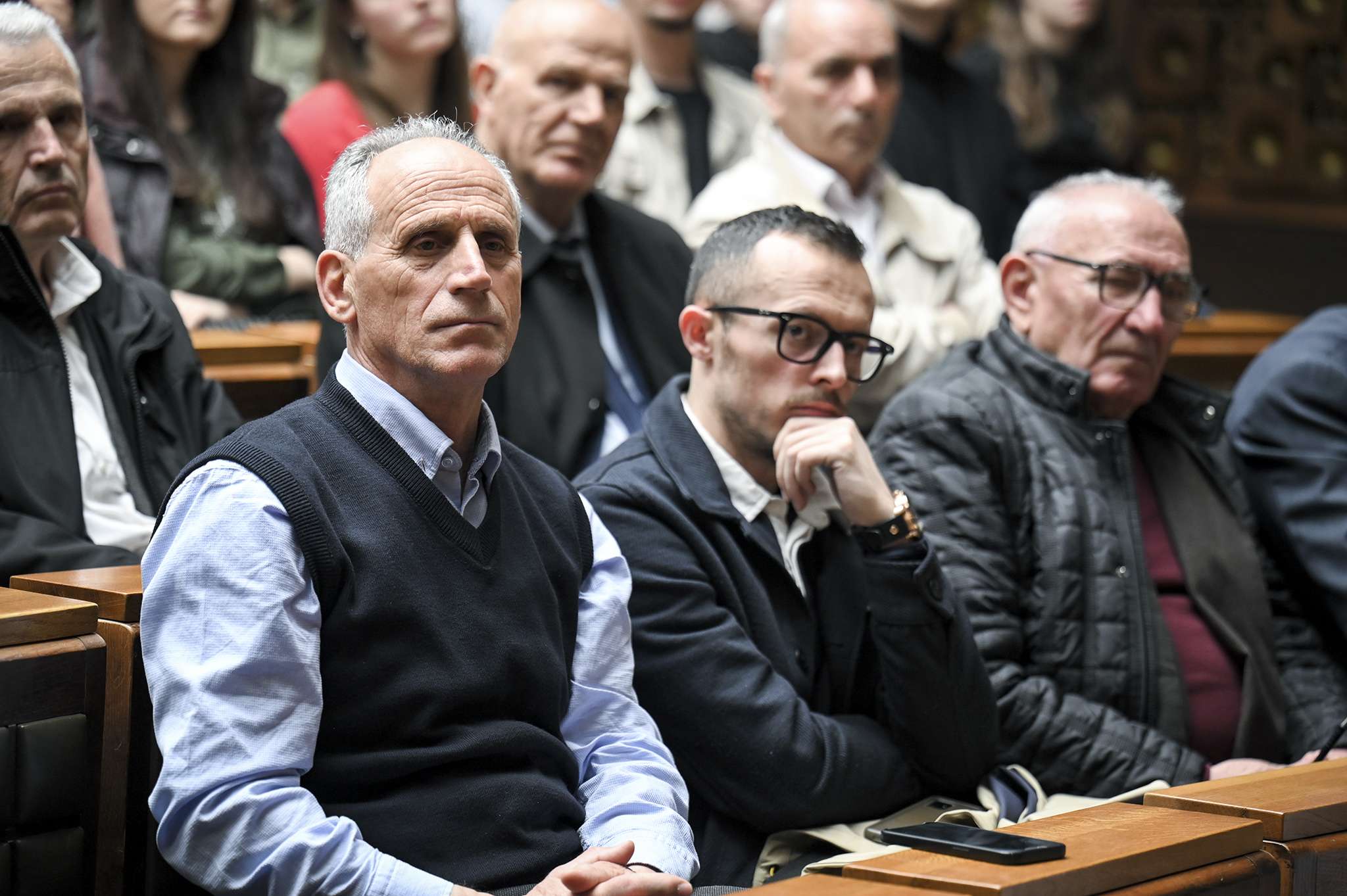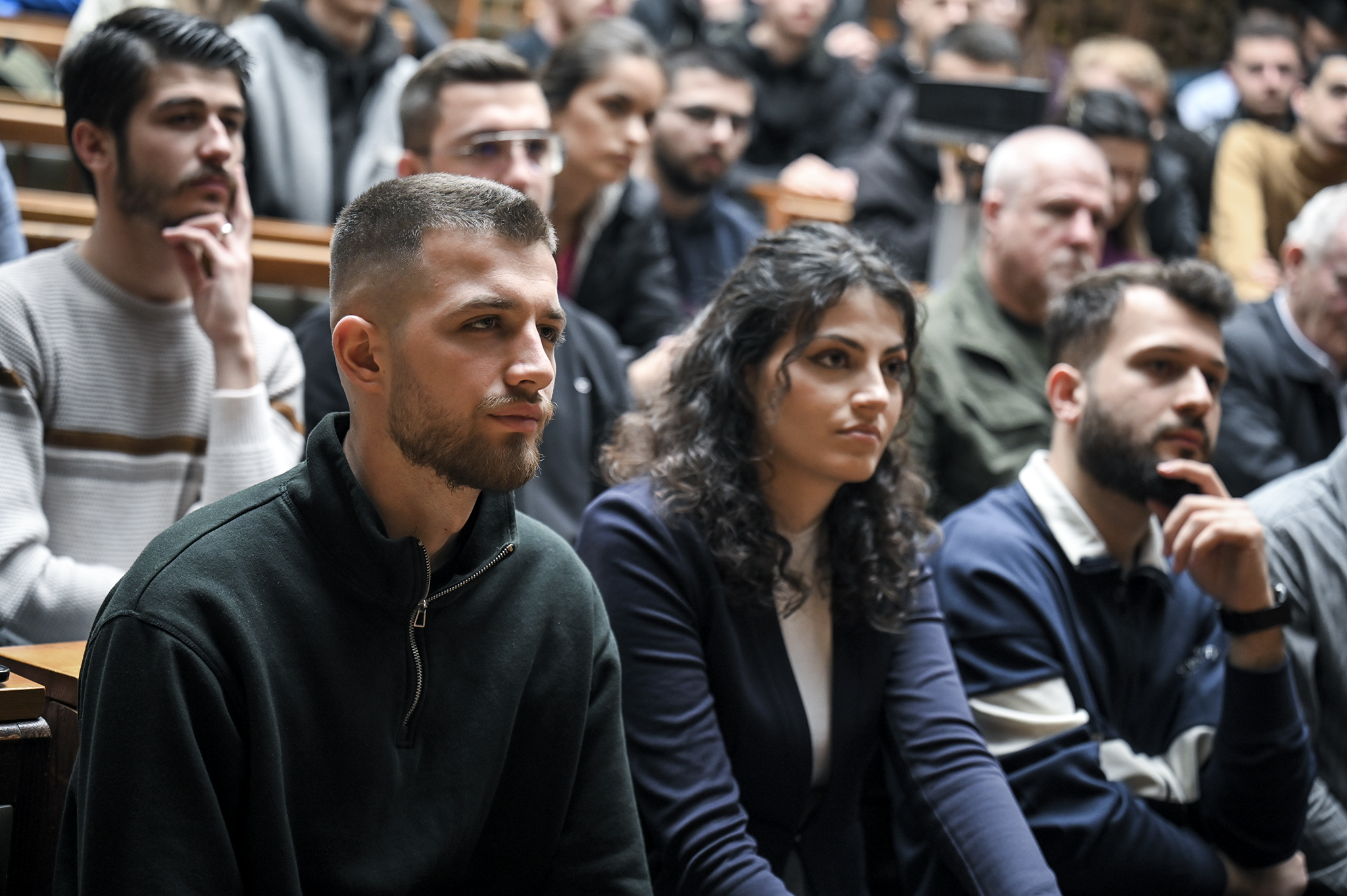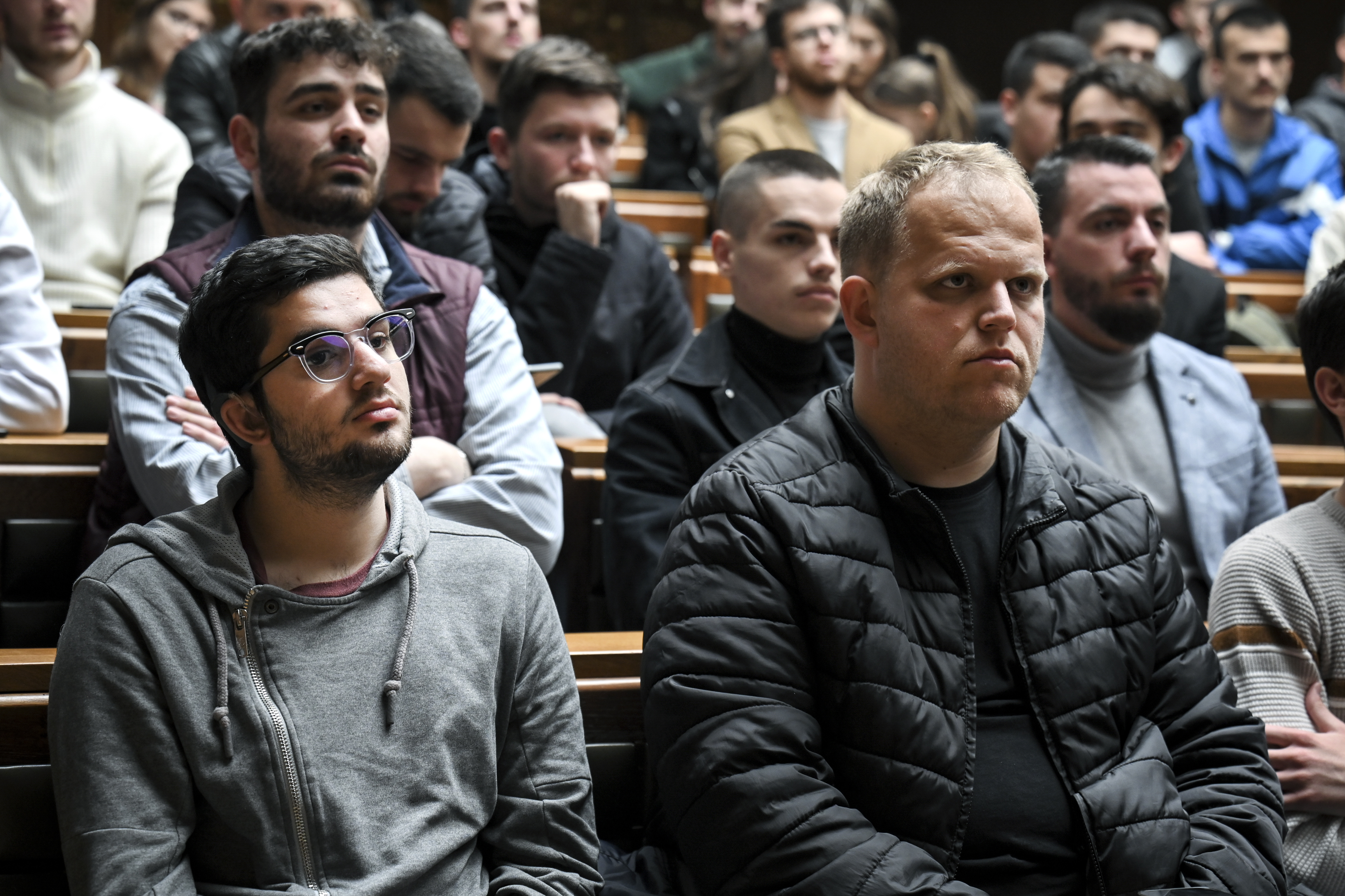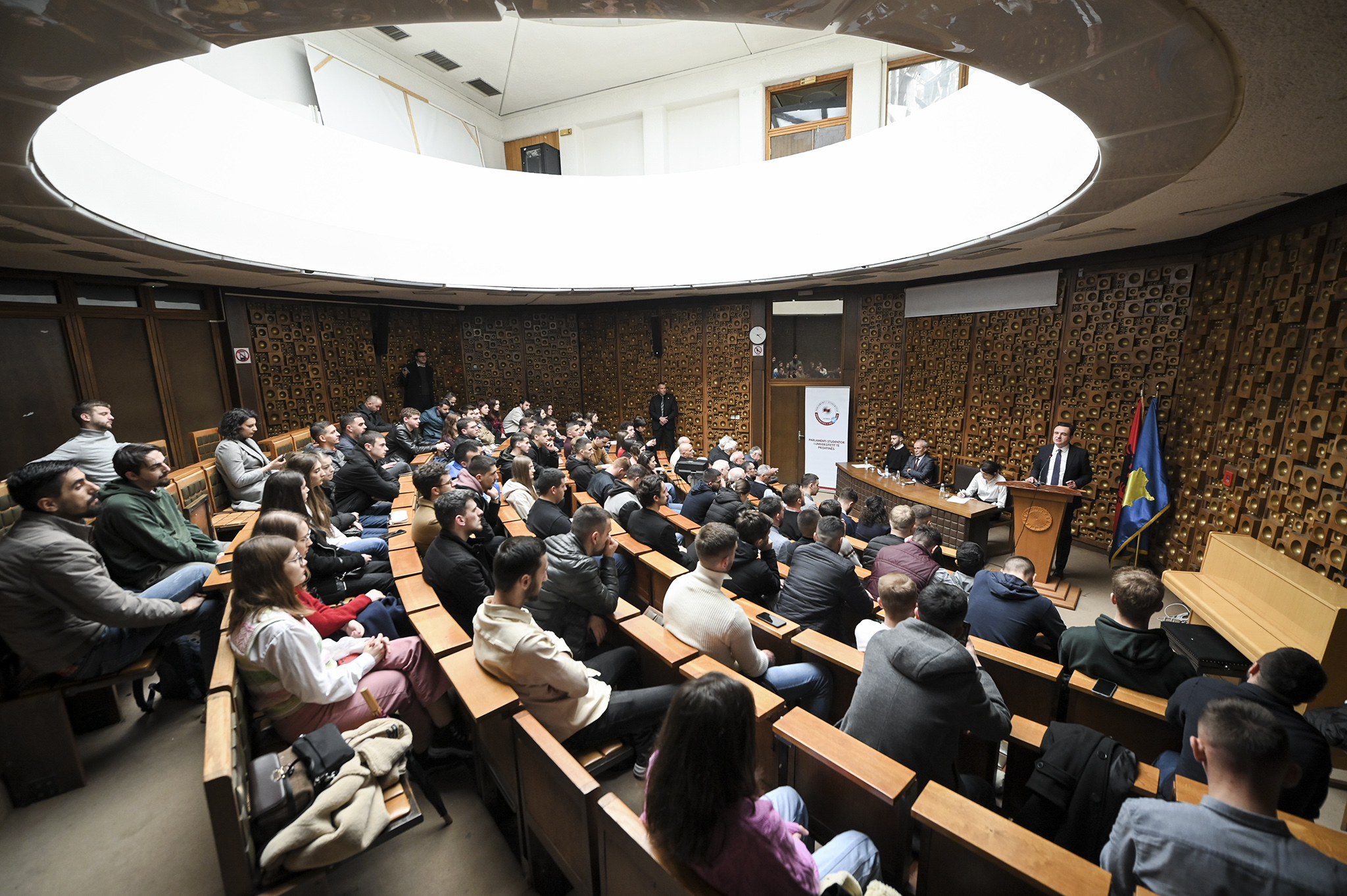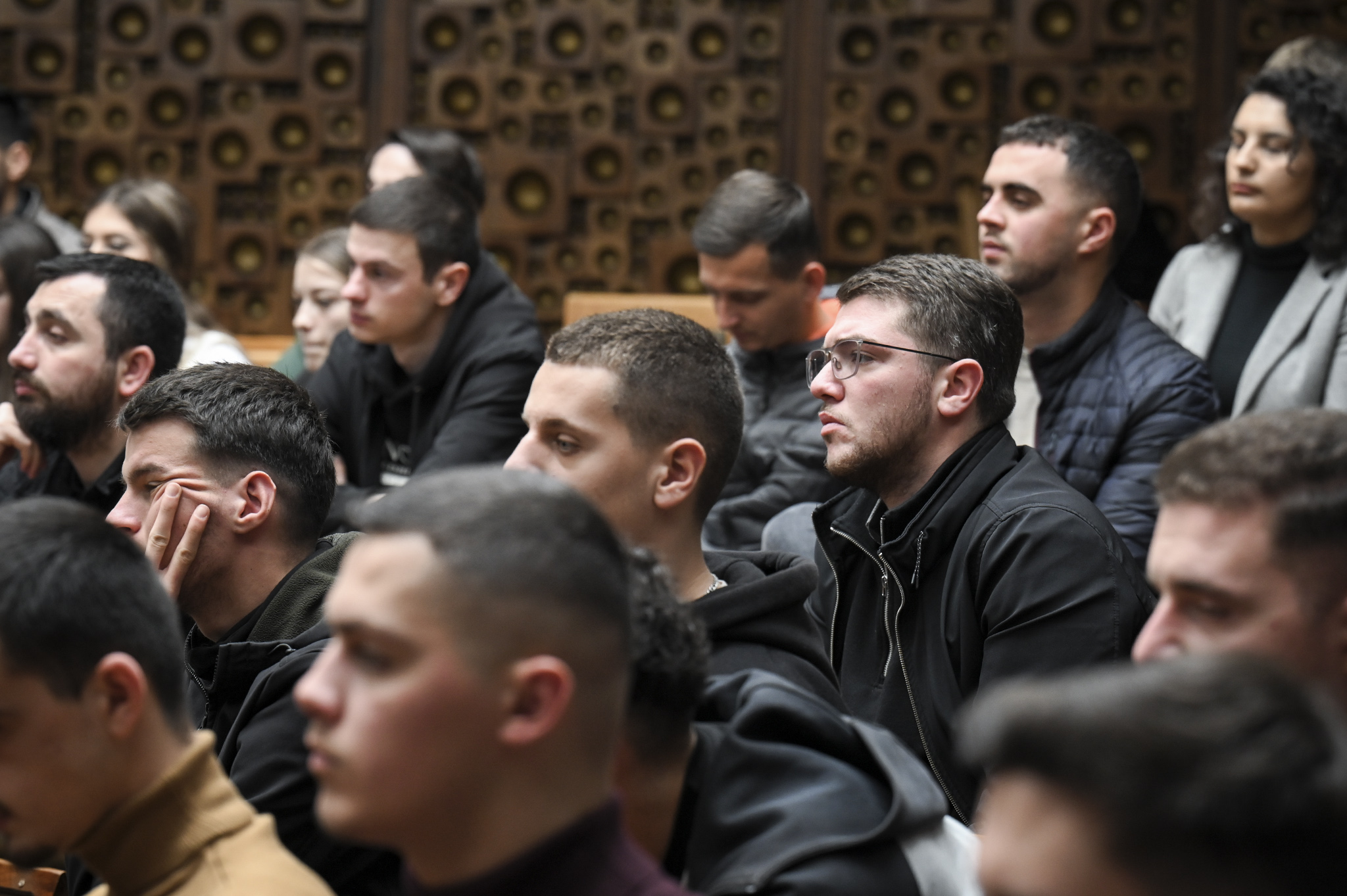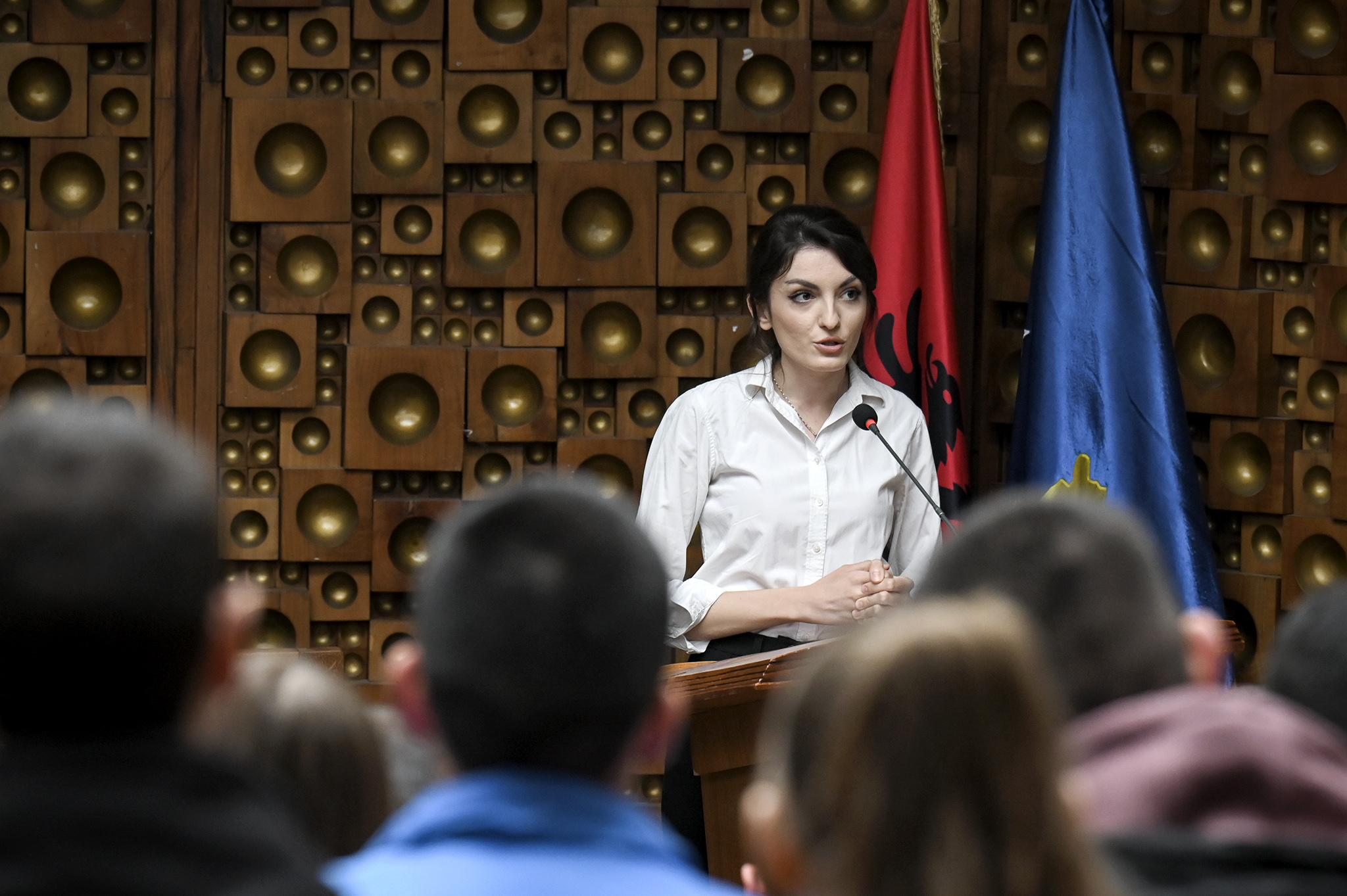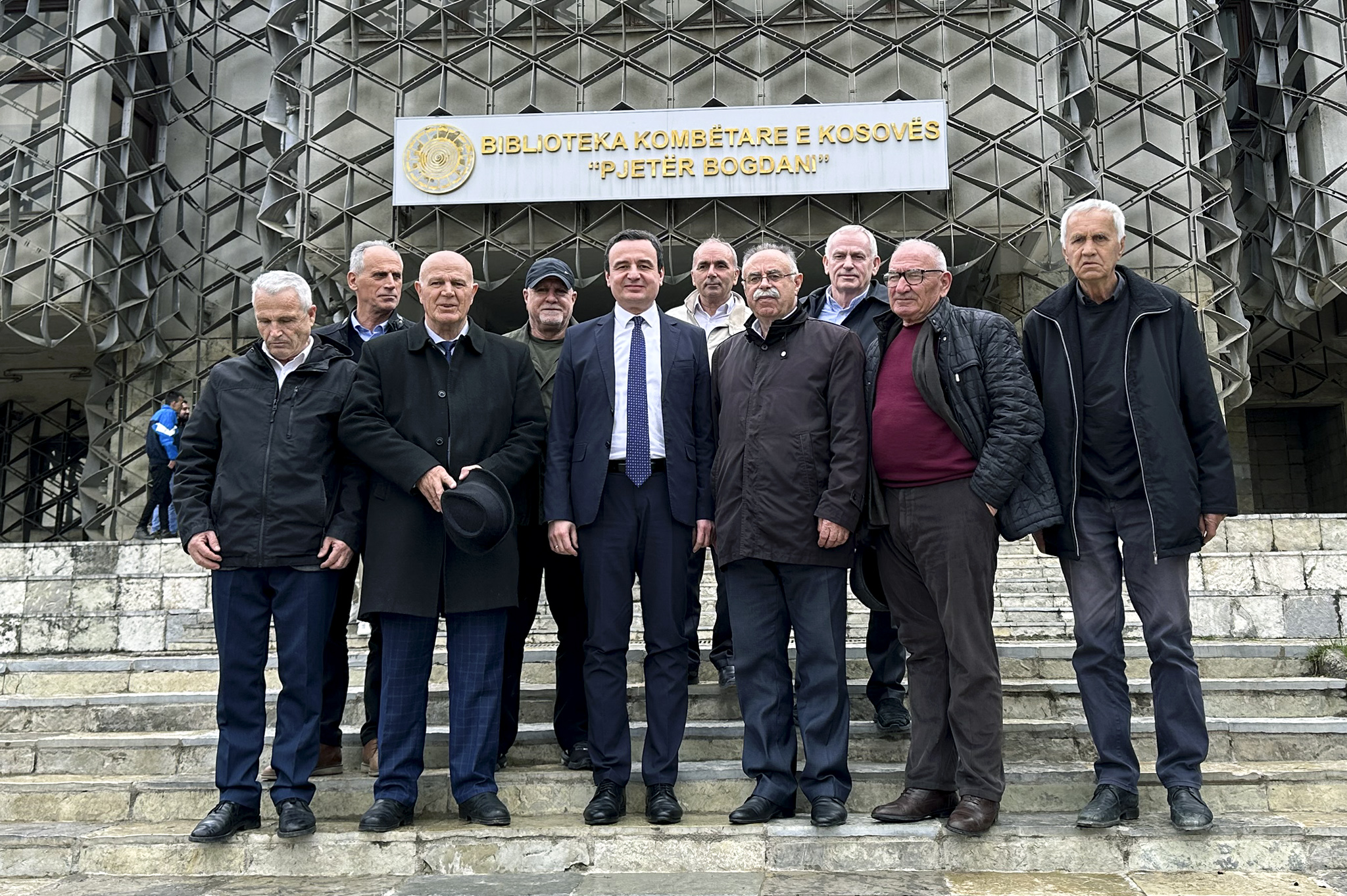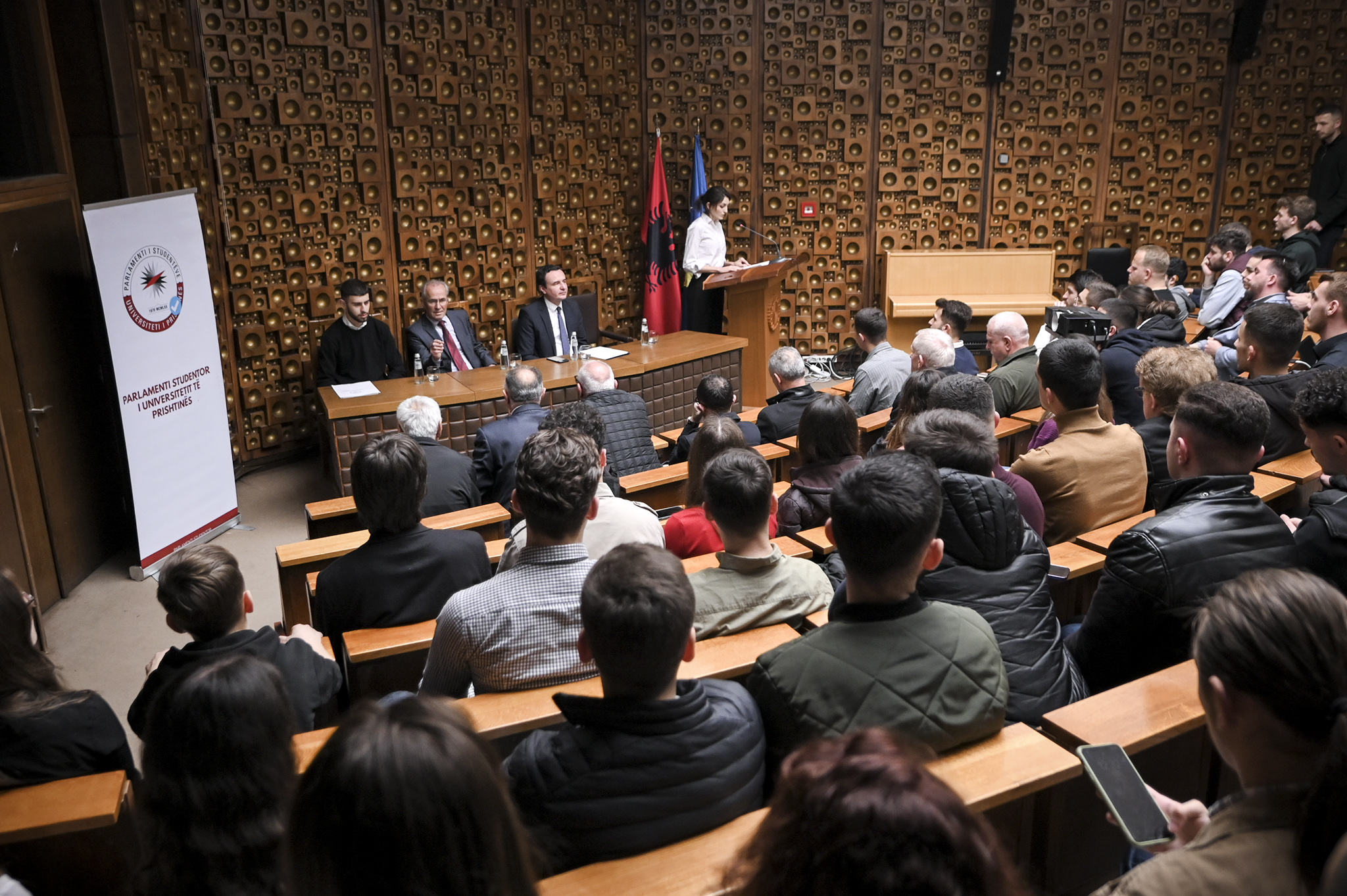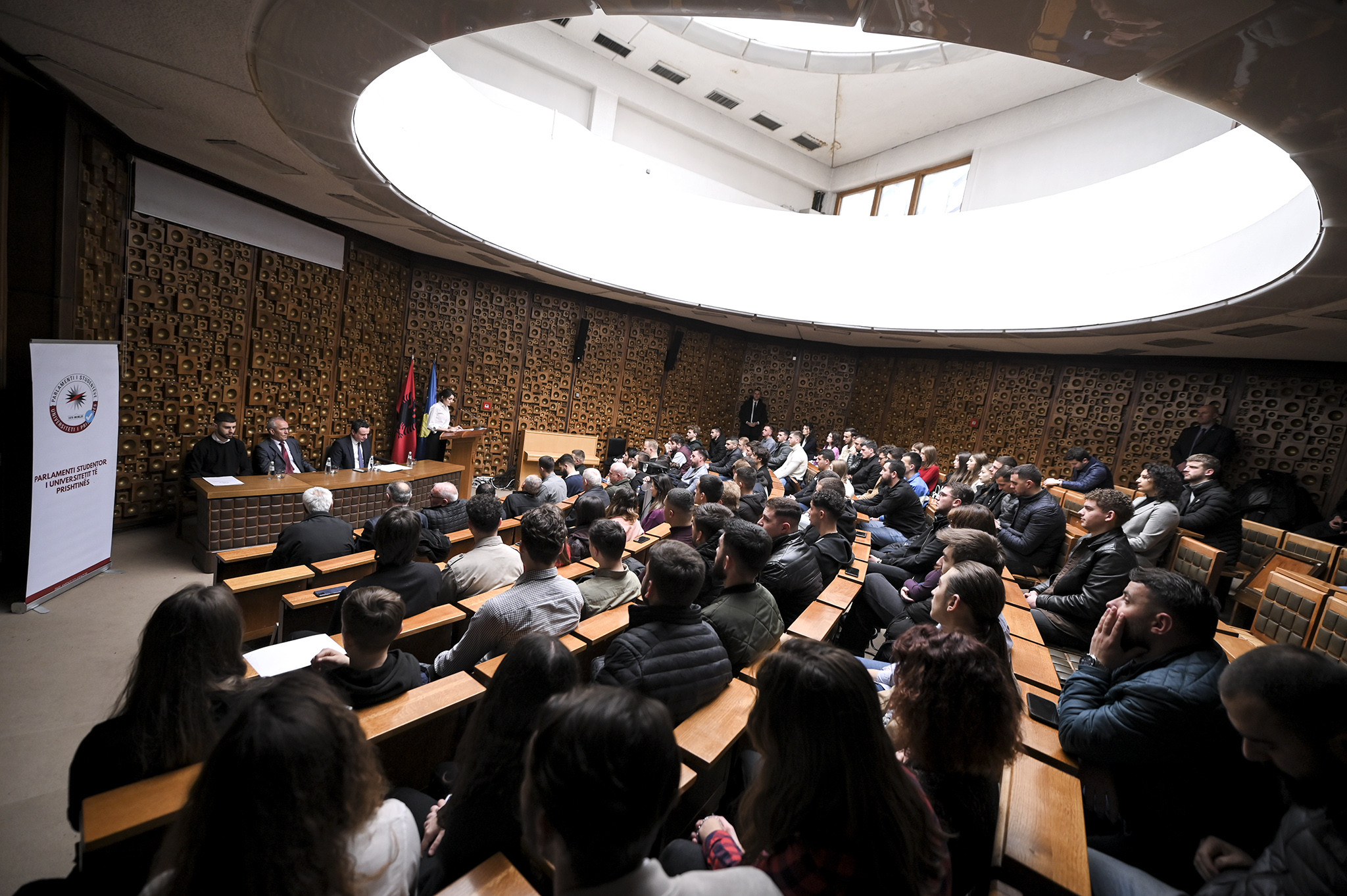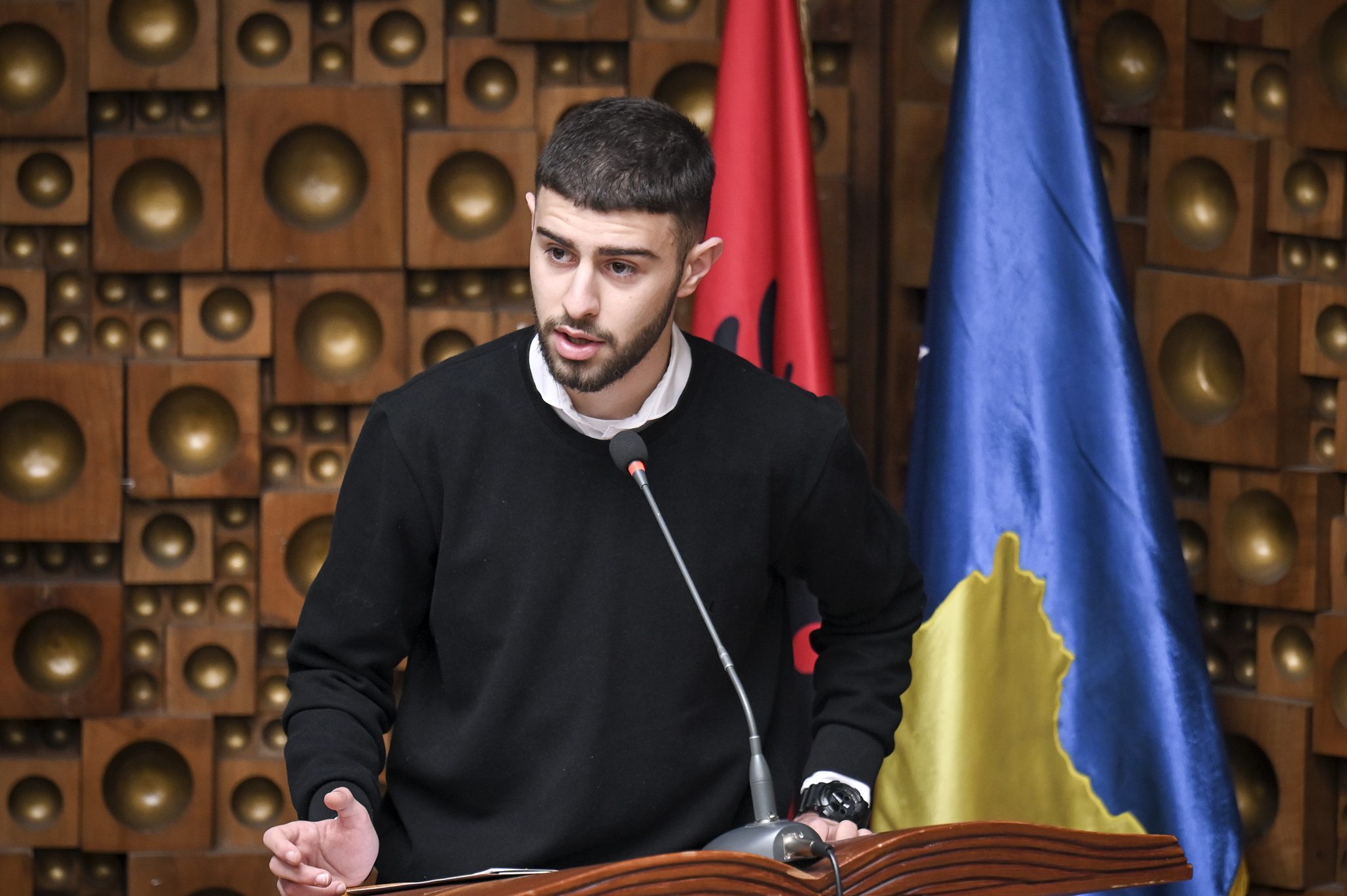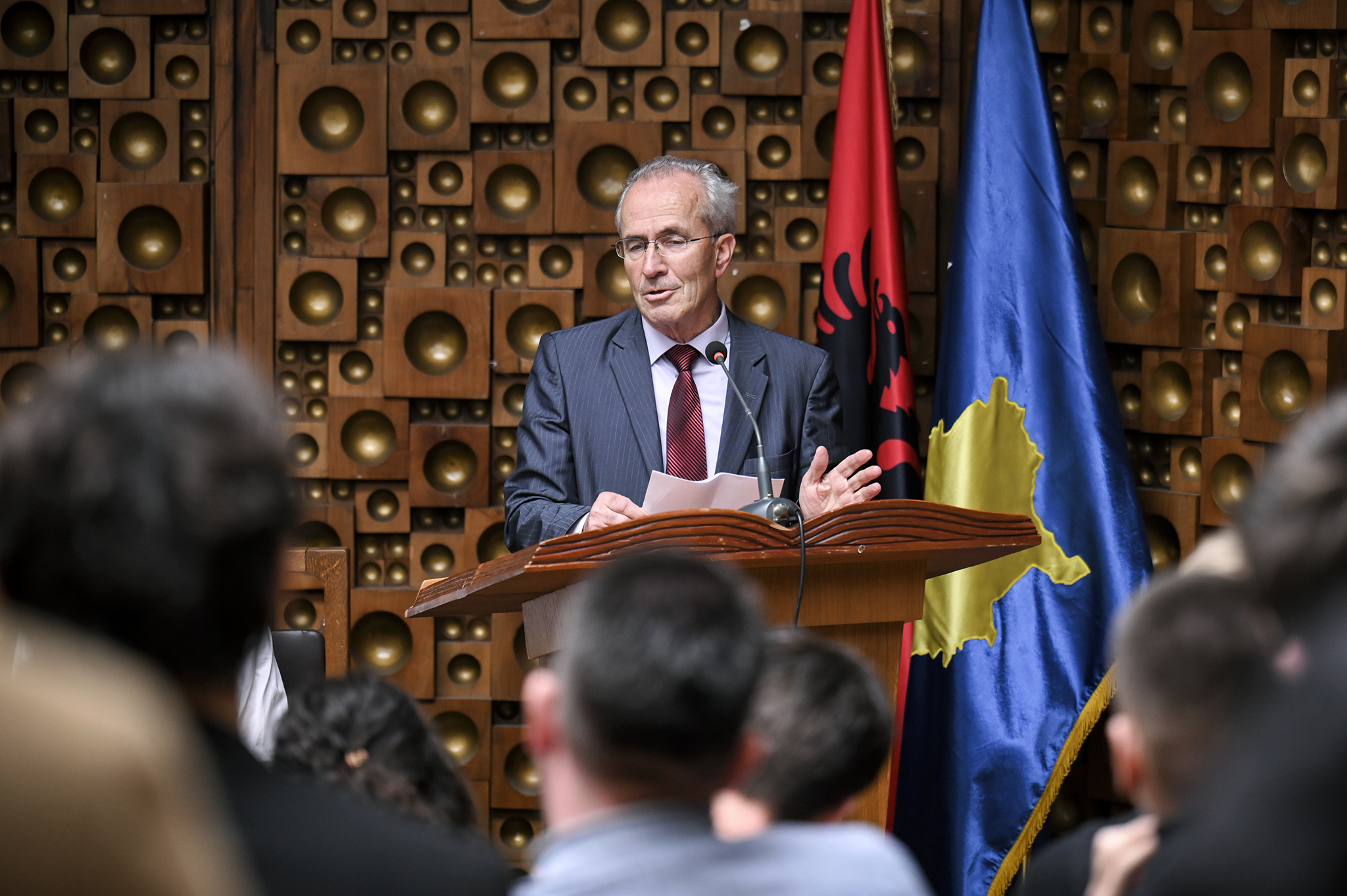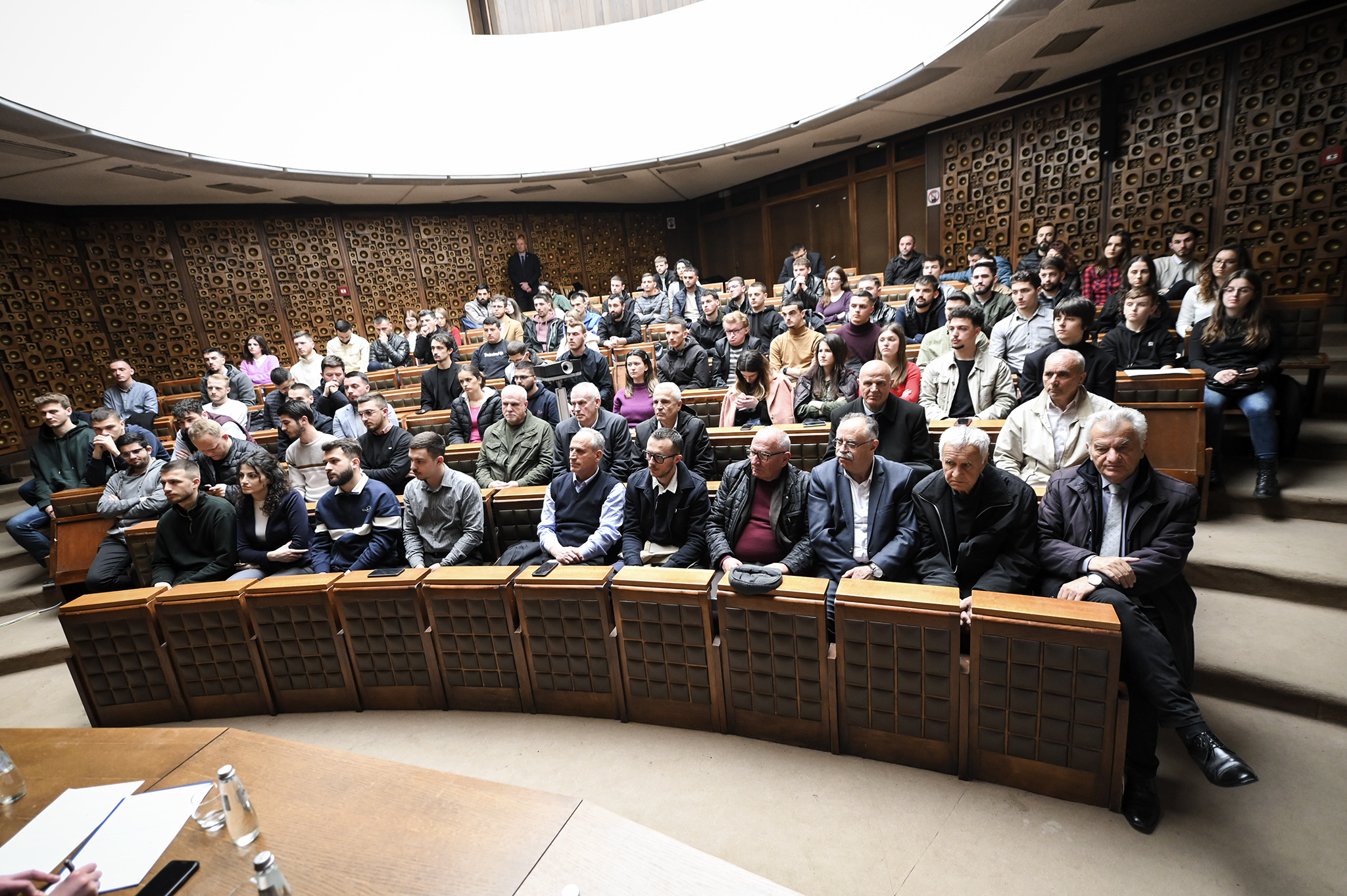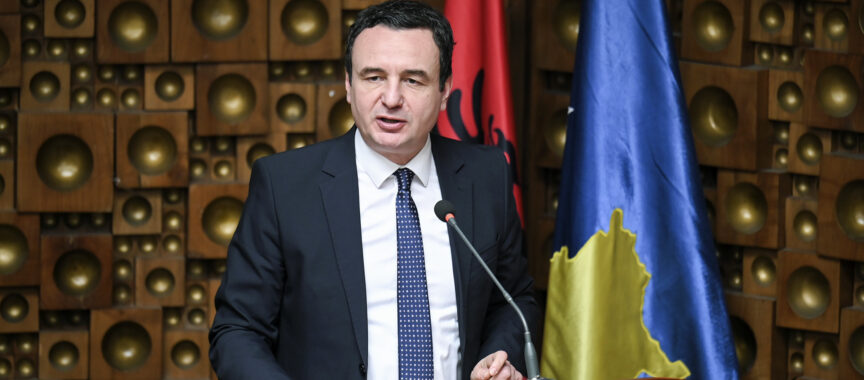Pristina, March 11, 2023
The Prime Minister of the Republic of Kosovo, Albin Kurti, participated in the gathering with students, marking the 42nd anniversary of the 1981 demonstrations, organized by the Student Parliament of the University of Pristina, “Hasan Prishtina”.
Remembering the period of that time, he said that the Demonstrations of 1981 produced a whole generation of student youth prisoners, who are still known as the ’81 Generation.
“This generation, which from inside the prison would produce a special type of literature that they themselves have called “prison literature”, or “literature from the prison”, and which would pay a high political bill with their lives. Over three thousand prisoners would spend about 25 thousand years in prisons, as in 1986, Kosovo had become the country with the highest number of political prisoners in Europe. About half of the total population of Kosovo was involved in the demonstrations, while about 1/3 of it would go through the terrible procedures of interrogations, political persecution and torture by the police and the secret service of the infamous UDB. Prime Minister Kurti said to the audience.
Below you can find the full speech of Prime Minister Kurti in marking the 42nd anniversary of the 1981 demonstrations:
Honorable deputy of the Assembly of the Republic and co-operator of the national issue, Mr. Hydajet Hyseni,
Honorable Vice Presidents of the Student Parliament of the University of Pristina, Alba Lala and Bleron Beka,
Honorable Deputy Minister of Defense in the Government of the Republic of Kosovo, Mr. Shemsi Syla,
Honorable other activists, organizers and participants of the 1981 demonstrations, Kadri Batusha, Ramadan Gashi, Xhemajl Pllana, Ukë Thaçi, Zymer Krasniqi, Gani Krasniqi, Shefik Sadiku, Hamdi Gërvalla and Zymer Neziri,
Honorable students,
Ladies and gentlemen,
Sisters and brothers,
Honorable attendees,
In the modern history of Kosovo, amid the density of events in the last twenty years of the 20th century, it is challenging to navigate from one event to another, or from where a phase begins and how far it is connected to a subsequent era. Even more than two decades after the fall of Yugoslavia, historians on one side and politicians and activists of the time on the other, continue to search for the event and the date on which the beginning of the end of Yugoslavia should be fixed! Perhaps today, March 11, could be that date. This is due to two events far from each other: I will tell the first at the beginning, and the second somewhere at the end.
On March 11, 1981, thousands of students of the University of Pristina demonstrated in the streets of the city, in a mass demonstration, which was violently suppressed by the Yugoslav police. They were demonstrating precisely against police violence, exercised on students a week earlier, on March 4, 1981, when they protested after a spontaneous revolt started in the student canteen for better conditions. In truth, this revolt and these student demonstrations were explosive manifestations of the great amount of violence and political discrimination accumulated over the years among Albanians, from the exercise of oppressive policies of the Serbian government in Kosovo.
At this point, with sources of inspiration from Albania and starting from the universal principle of the right to self-determination, the Albanians put the popular slogan “Kosova Republikë” at the forefront, as a political call for the realization of the demands of the demonstrators for more freedom and rights, for equality, for social progress and political advancement.
During the previous three decades, Kosovo was left the most underdeveloped and discriminated province in Yugoslavia, while the Albanians were the most oppressed ethnic community in all of Europe. Politically underrepresented, discriminated in access to resources, economically exploited, limited in cultural rights, treated as second-class citizens, as well as excluded from the opportunity to fully realize their political will, Albanians in Yugoslavia had reached an extremely unfavorable political situation. After the demonstrations of 1981, this situation would be formalized both legally and politically as a “state of emergency”, but unfortunately, in the opposite direction. It was the government of Serbia that time, that would announce the “state of emergency” in Kosovo, about two months after it had suppressed the demonstrations held on March 11, March 26, and April 1 and 2, 1981, using all force and brutality of the state apparatus of violence. Each of these student demonstrations, which were also supported by the workers and the whole people, had its victims of being killed, followed by many more beaten, persecuted and imprisoned.
The demonstrations of 1981 produced an entire generation of student youth prisoners, known even today as the ’81 Generation. This generation, which from inside the prison would produce a special type of literature that they themselves have called “prison literature”, or “literature from the prison”, and which would pay a high political bill with their lives. Over three thousand prisoners would spend about 25 thousand years in prisons, as in 1986, Kosovo had become the country with the highest number of political prisoners in Europe. About half of the total population of Kosovo was involved in the demonstrations, while about 1/3 of it would go through the terrible procedures of interrogations, political persecution and torture by the police and the secret service of the infamous UDB.
The year 1981 would turn into a political touchstone for the society of that time, since from then on, it was also a kind of criterion for everyone’s political direction. Depending on where you were in March-April 1981 and what attitude you had during that period, you classified yourself in society in front of the Serbian government. After the demonstrations of 1981, the University of Pristina itself changed its name, calling it the University of Kosovo in Pristina, a name it would keep for two years. In the university, as well as in other parts of society, political differentiations started. Thus, discrimination and exclusion on the basis of ethnic affiliation as well as on the basis of political loyalty to the regime of the time, would only gradually be formalized.
At the same time, around 10 million Polish workers joined the Independent Self-Governing Trade Union, “Solidarnost” in Poland, which was the first independent trade union in a former socialist bloc country to be recognized by the state. In Serbia-dominated Yugoslavia, there was no question of something similar. The groups of organizers of the 1981 demonstrations would establish illegal political organizations, among which in 1982 the People’s Movement for the Republic of Kosovo.
Kosovo would also experience a lot of oppression and violence along with resistance and protests: political trials, prisoners and soldiers killed, political assassinations, curfews, miners’ strikes, the demonstrations of 1989 and the suppression of Kosovo’s autonomy in March of the year 1989. In these years, a lawyer who had worked as a company manager, started a political career, climbing through the councils and central party committees of the communists of Yugoslavia. The suppression of the political movements of the Albanians in Kosovo would catapult him to the top of the Serbian state and of Yugoslavia itself. His name was Slobodan Milosevic, but the bloody wars he started during the 90s in Yugoslavia, with the aim of creating a greater Serbia, would give him the epithet “Butcher of the Balkans”.
It would be precisely Kosovo, where he was raised politically between 1987 – 1989, “that would eat the head” of this Serbian dictator, who with his hegemonic policies, caused the death of about 150 thousand people in the countries of former Yugoslavia. In 2002, he was brought before the International Criminal Tribunal for the former Yugoslavia in The Hague to be held accountable for war crimes. After 4 years of trial, unfortunately Slobodan Milosevic died in 2006 without receiving the verdict of the court. And for a very symbolic and significant coincidence, he died exactly on March 11, on a day like today.
From March 11, 1981 to March 11, 2006, there are 25 years in between. This quarter of a century can be called the period of a complete cycle of the fall and destruction of Yugoslavia, accompanied by so many victims and damages. While the movements started by the demonstrations of 1981, would continue for more than two decades, passing from June 1999, when Kosovo was liberated, until 2008, when the former slogan for the Republic of Kosovo, would be declared by the political will of its people in the Republic of Kosovo.
The spring demonstrations of 1981 followed the demonstrations of 1968 and inspired and encouraged all subsequent liberation organizations and developments, especially the KLA.
Glory to those who fell in the demonstrations of 1981 and gratitude for their activity to the prisoners of the 1981 Generation, as well as to all those who contributed to the freedom and citizenship of Kosovo!
Last modified: March 13, 2023
